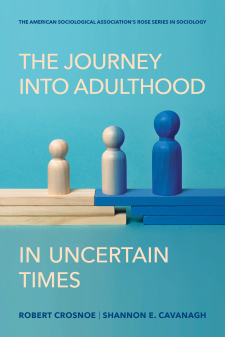Main navigation
How has the American family changed over the last 50 years? In an extensively researched new journal article, former RSF Visiting Scholar Suzanne Bianchi traces the more diverse family forms in the twenty-first century and the different ways American parents now allocate their time. She concludes that "nothing short of a revolution has occurred in family life":
The United States, like Australia, Canada, Great Britain and many countries in Europe, has witnessed monumental economic, social, cultural, and demographic changes since the 1960s that have altered family forms in the twenty-first century. Similar to these other countries, the United States has experienced a postponing of marriage; declines in marriage among some subgroups; increases in divorce, nonmarital childbearing, and cohabitation; a decline in fertility; the aging of the population; and increases in women's labor force participation, resulting in a shift in the household division of labor.
Using the American Time Use Survey (ATUS) data, Bianchi also tracks changes in unpaid and paid work of mothers and fathers since the 1960s in the United States. She reaches three important conclusions:
- Mothers: As U.S. mothers increase their labor force participation, they shed hours of housework but not the hours they devote to childrearing.
- Fathers: Fathers have increased the time they spend on childcare over the past two or three decades. For fathers, more childcare hours were added to long work hours, especially for married fathers who average more than 40 hours of paid work per week (regardless of the age of their children).
- Children: At the very time that families increasingly had all adults in the paid workforce as a result of more dual-earning and single parenting, rearing children seemingly took on an intensive form. Also, launching children into financial independence takes longer than in the past.
As they shuttle between home and work, Bianchi writes, American families now face an increasingly apparent tension between paid work and family caregiving. "Finding the right mix of policy incentives and private initiatives to support workers when caregiving demands are overwhelming," she writes, "is the challenge we face in the United States if we want productive workers but also strong families to support those workers."
Read the full article in the November issue of the Annals of the American Academy of Political and Social Science. An earlier version of the article can be read for free below.
Family Change and Time Allocation in American Families




